Helpful hints: how to care for indoor lemon
Many people who decide to buy a citrus tree opt for indoor lemon... It attracts with its decorative appearance, aromatic scent and original shine of foliage. But in order for the plant to exist at home for a long period and bear fruit abundantly, you need to know how to properly care for indoor lemon.
Content:
- Structural features
- Watering, feeding
- Lighting, humidity and temperature
- Transplant and pruning
- Diseases and pests, the fight against them
Structural features
Lemon - a capricious exotic plant. The homeland of his habitat is India. But there are no more wild representatives in living nature, man has completely cultivated all the existing species cultures of this representative.
Features of the plant:
- Lemon is a short plant or large shrub with powerful branches covered with thorny needles. Young shoots at the point of growth are distinguished by a violet-purple hue.
- The leaf is oblong, oval in shape with slightly prominent denticles. A large number of glands are located on the sheets, inside of which essential oil is contained. When touching the leaf plate, thanks to these glands, a characteristic aroma is felt. The change of greenery occurs gradually. Each leaf lives up to a maximum of 3 years, then dries up and dies off.
- Flowers on lemon are inconspicuous, reaching 4-5 cm. White inflorescences, visually represent a sparse chamomile. They are bisexual, placed on a branch singly or in pairs. In some cases, there may be much more inflorescences in one place, but then some of them will have to be removed. This is necessary for the developing fruits to gain the maximum amount of nutrients.
- Each inflorescence from the moment of appearance until full disclosure lives from 7 to 9 weeks. Flowering lasts a short period of time, but the process of forming a fruit before it starts to ripen can take up to 230-250 days. If the fruit is set in the spring and summer, in a warm room and with sufficient lighting, then the period of formation of a full-fledged lemon can be reduced to 180-210 days.
- If a tree has released flowers in the first year of its life, it is better to break them off, and let the plant be saturated with nutrients, to grow even more. In the second year, the shrub will independently decide how much flowers to remain on its branches. It is recommended to leave flowering if the tree has 20 full leaves.
- Small lemons are tied to the branches of a tree, both with the help of pollination and without it (parthenocarpic). In the latter case, the fruits differ only in the absence of seeds inside ripe lemon slices.
- The fruit is ovoid or slightly oblong in shape. Initially, the skin of the fruit has a deep green tone. As it ripens, the rind changes to a light yellow. In addition, it has a pronounced specific odor. The pulp inside the fruit is juicy, rather acidic, and is divided into 10-14 equal slices.
Watering, feeding
Care has a great impact on the health of the tree. If the conditions of detention are not proper, then the plant begins to throw off the leaves. Most often, this process occurs in the winter.
It depends on how many healthy leaves are left on the branches whether there will be fragrant fruits next year. Each fruit should have at least 10-15 green leaves. With a smaller amount, the plant will refuse to bear fruit.
Watering very important for the bush. Irrigation must be carried out with warm water or room temperature. At different times of the year, the introduction of nutrient moisture is different:
- From March to September inclusive, it is recommended to water the plant abundantly daily.
- From October to February, you need to reduce the amount of incoming moisture to 1 time per week.
The main thing is that in no case should the formation of swampy soil under the plant be allowed. This can lead to decay of the root system. Then it will be either very difficult or impossible to save the bush.
Some experienced gardeners who know thoroughly lemon care can provoke a new round of flowering by canceling watering. So the owner of a lemon tree takes the plant to a forced dormancy, practically reducing the introduction of nutrient moisture. After removing from rest, the shrub begins to bloom profusely and form sunny berries. But the main thing in this business is not to overdo it. With a prolonged absence of liquid, the leaves of the bush curl into tubes, dries and falls off.
A prerequisite for active growth is top dressing. It should be applied weekly in summer and in winter, if fruits are forming, then once a month. Fertilization is done after watering after 2 hours:
- Organic feed - mullein and water are combined in proportions 1: 1, respectively, infused for 1 week. After the infusion is diluted in a ratio of 1:15 to parts of water and watered at the root, trying not to fall on the foliage.
- Minerals - for this in a specialized store are selected for citrus plants mineral fertilizer... Dilute according to the instructions.
It is recommended to irrigate the soil under the bush twice a year with a weak solution of manganese. This is necessary for the disinfection and disinfection of soil.
Lighting, humidity and temperature
Lighting for a lemon is essential. It is best placed on the southeast side. But during the summer heat and scorching rays, it is recommended to shade with a curtain or move it slightly into the shade. In winter, with a lack of daylight hours, it is necessary to additionally illuminate the shrub with phytolamps, increasing the duration of daylight hours to the maximum required 12 hours.
So that the tree grows its branches evenly and does not stretch to one side, it needs to be scrolled once a month, substituting the sun on one side or the other.
Lack of light threatens to stop the growth and development of foliage and new shoots. In addition, the taste of ripe fruits will be poor - they will be saturated with acid.
The temperature regime should be observed for the fruitful cultivation of the shrub:
- At the time of flowering, you need to maintain the temperature in the region of +18 C. When the degrees are exceeded, the plant will drop leaves and inflorescences.
- In the spring, you need to reduce the degrees to +12 C, place the plant on a glazed balcony. This will provoke good growth of the leaf plates.
- In the winter months, the recommended temperature is + 12 .. + 17 C, for good growth you need additional lighting.
- In summer, for better ripening, up to +22 .. + 25 C.
If the temperature rises to +25 C, then you need to additionally spray the shrub. If the humidity drops to a minimum, then the plant will begin to throw off the foliage and die. Spray in hot weather or if the bush is near a hot battery at least 2-3 times a day.
The optimum humidity is 60-70%. These are the requirements for the growth and development of homemade lemon that are the best.
Transplant and pruning
Young plants up to 3 years old are recommended to be replanted once every 12 months.Transplanting should be carried out by the transshipment method so that the root system does not notice the change of the pot and the addition of new soil. During the transshipment, part of the old soil is removed, from which all the nutrients have already been taken out by the roots of the plant.
After the lemon has passed 3 years of age, it is transplanted once every 3 years. It is strictly forbidden to transplant a flowering or fruiting plant. For replanting, you should prepare a fresh soil substrate. It should be loose, water and oxygen permeable. The reaction should be neutral, otherwise the shrub will not grow.
For lemon, the following composition of the soil substrate is suitable:
- The sand is river sand.
- Sod connected to garden soil.
- Wood ash.
- Dung humus.
All ingredients must be taken in equal parts, and the ash should be no more than 1-2 tablespoons. By combining these components, an excellent nutrient mass is obtained, which saturates the root system of the lemon tree with nutrients.
Fruit pruning is most often carried out in the spring months when the plant wakes up from hibernation.
Long shoots are trimmed so that up to 5 healthy, powerful leaves remain. If pruning is carried out on time and correctly, then a young lemon can form the first fruits as early as 2-3 years of age. Many varieties of lemons produce flowers only on branches of the 4th-5th order. It is worth controlling the number of flowers, because if you leave everything, then the tree can be depleted during the formation of fruits.
Diseases and pests, the fight against them
Under unfavorable conditions, various pests and diseases can attack the lemon tree. Allocate the following uninvited guests who can harm the bush:
- Spider mite
- Shield
- Aphid
- Thrips
Any pest, upon close inspection, is easily visible on the lower part of the leaf, multiplies quickly and in large numbers. The fight is carried out after using a soap-ash solution. In addition, a regular shower helps well, while the leaves are washed both from the top and from the bottom.
In addition, infection with diseases is possible:
- Infectious nature - not always subject to treatment. Often the affected shrub is removed to avoid infecting healthy species and burned to prevent disease.
- Fungal diseases (mold, late blight, sooty fungus, root rot) - to eliminate the problem, the affected areas are removed, rotten roots are cut off. Fresh sections are treated with activated carbon or potassium permanganate solution. If necessary, spraying with chemicals is carried out.
- Viral diseases (leaf mosaic, citrus cancer, xylopsorosis, triteses) cannot be cured. The pot is removed and burned.
Thus, in order for the plant to be healthy and without harmful guests, it is worth constantly monitoring living conditions and the presence of parasites. Observing all the required recommendations, the shrub will bear fruit annually and actively develop.
More information can be found in the video:




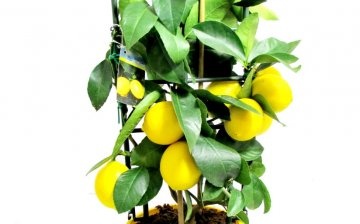
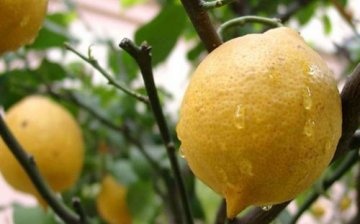

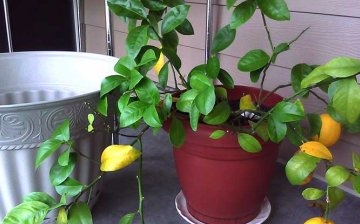







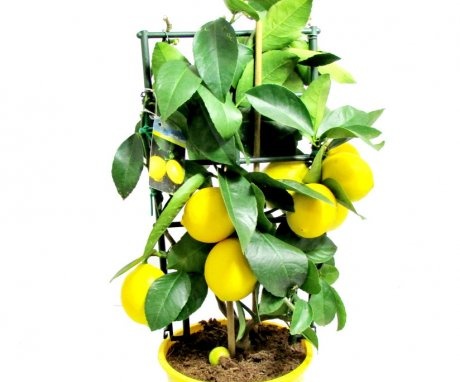

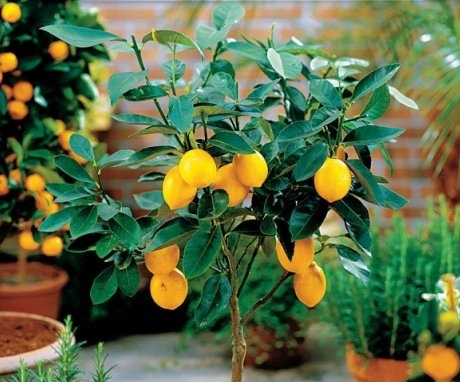

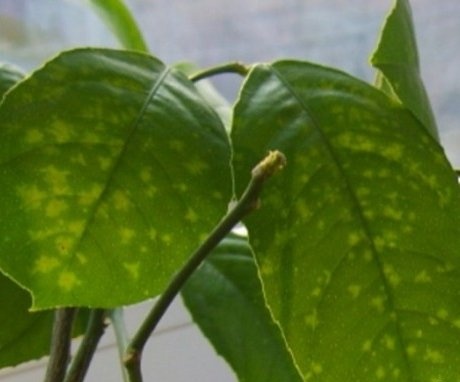
Is it really possible to grow such beauty at home? How many tried, nothing worked. The lemon constantly threw off the casting and the tree was dying, probably there was not enough light or some pests that needed to be processed.
I also fail to grow lemon in the apartment. I think that this is due to dry air during the heating season, it is not possible to achieve optimal humidity, although I spray the plant and put containers with water on the batteries.
Once we also tried to grow a lemon - nothing worked, the leaves also turned yellow, the tree only grew up, not to mention getting fruits. It seems to me that in our apartments it is very difficult.